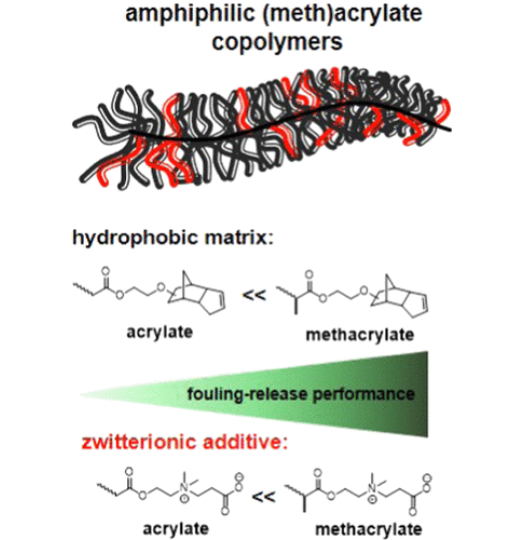Amphiphilic Coatings
While zwitterionic polymers are typical examples of hydrogels, amphiphilic polymers received increasing attention in the past as they combine the inertness of hydrophilic polymers with the low surface energy of hydrophobic chemistries. We create new amphiphilic polymers based on natural or bioinspired compounds including zwitterions,[1] polysaccharides,[2] or peptides[3] and test these compounds in the laboratory and in the field.
Students working on this project: Lisa Schardt, Jana Karthäuser
Collaborations: Prof. Clare, University of Newcastle, UK and Prof. Hunsucker and Prof. Swain (FIT test site at Port Canaveral, FL, USA)

[1] Koschitzki, F. et al. Amphiphilic Zwitterionic Acrylate/Methacrylate Copolymers for Marine Fouling-Release Coatings. (2021) DOI:10.1021/acs.langmuir.1c00428.
[2] Gnanasampanthan, T. et al. Amphiphilic Alginate-Based Layer-by-Layer Coatings Exhibiting Resistance against Nonspecific Protein Adsorption and Marine Biofouling (2022) DOI: 10.1021/acs.langmuir.1c00428
[3] Beyer, C. D. et al. α-Aminoisobutyric Acid-Stabilized Peptide SAMs with Low Nonspecific Protein Adsorption and Resistance against Marine Biofouling. ACS Sustain. Chem. Eng. 8, 2665–2671 (2020). DOI: 10.1021/acssuschemeng.9b05889

